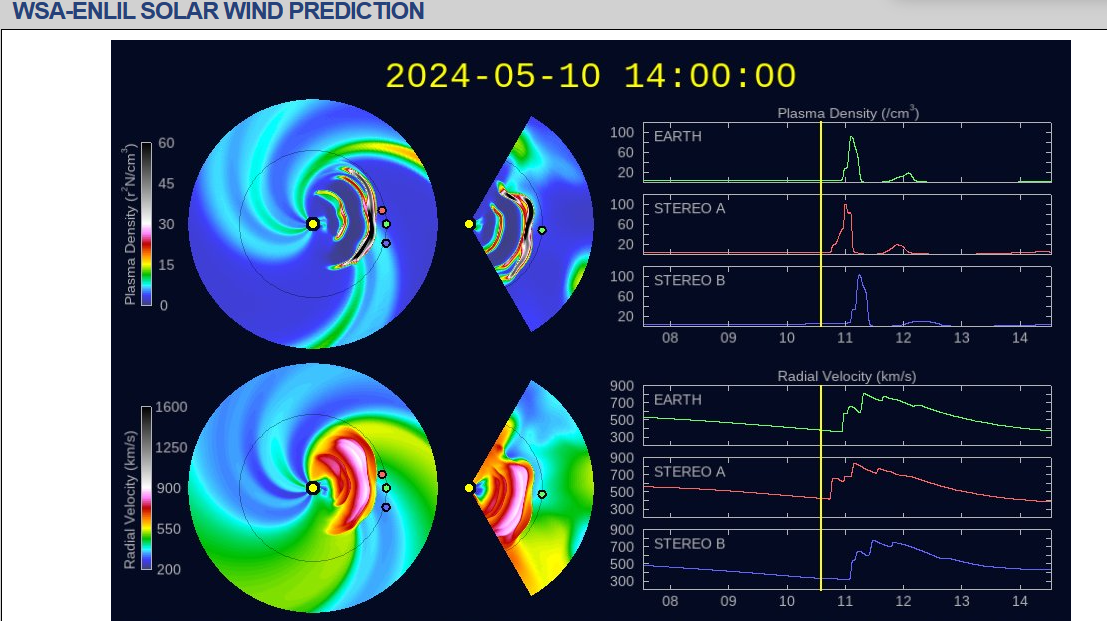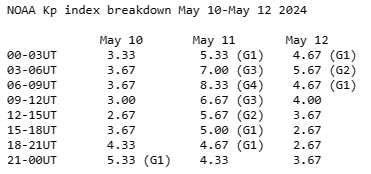Update: G4-Level Geomagnetic Storm Hits Earth
10th May 2024
Update: 0200 The first wave of this complex storm hit a few hours earlier than expected – and harder than expected. NOAA has upgraded the storm to a G5, or extreme. Thus far, no damage to satellites has been reported. The next strong wave should hit just before sunrise in Europe.
_…_
NOAA’s Space Weather Prediction Center predicts that a geomagnetic storm will hit Earth over 10-12th May. The geomagnetic storm should start on Friday evening, peak around sunrise, Greenwich time, on Saturday, and tail off through the morning of Sunday.
This is no ordinary storm. G4 class storms, as ranked by the U.S. agency, have caused considerable damage to electrical systems on Earth as well as to satellites. A G4 class geomagnetic storm brought down parts of Quebec’s power grid in 1989. In a more recent storm of this power, 40 newly launched Starlink satellites were destroyed electronically, and failed to maintain their orbit.
What’s on its way?
NOAA’s satellites detected five (originally announced as four) strong Coronal Mass Ejections (CMEs) coming from sunspot AR 3634. More than one CME was an X-class event, and the strongest was an X2.2.
What enhances the power of the upcoming geomagnetic storm is that the first CME sweeps material out of the way, which helps the later ones travel faster. Because, in this case, the latter CMEs were stronger and sent waves out more strongly, the later waves will overtake the first one, adding its energy, and become all the stronger for it. This is what is called a Cannibal CME, and that’s what is headed for Earth. Here’s a breakdown, courtesy of NOAA:

The geomagnetic storm is expected to hit around 2100 UTC as a G1-class storm. It will intensify through the night and is expected to reach a G4 strength on Saturday morning. Auroras could be visible as far south as Rome and Mexico City before dawn, local time.
Possible effects
In space, satellites are definitely in for a trial. All satellites will face the energy of the storm. Those in low earth orbit may encounter increased drag in their orbit as the atmosphere is affected by the increase in energy.
Earth-side, GPS and satellite communications are likely to be degraded, especially in higher latitudes. Commercial aircraft, again, especially in high latitudes, may reroute or delay flights due to degraded navigation or increased exposure to radiation. Flights from Tromso to Longyearbyen or over the North Pole could be affected this way.
On the ground, power grids are much more robust than they were in 1989. They are also much more loaded. Local and regional effects are possible. Could this be a Carrington Event? Spaceweather.com says ‘no’. Ah, but what’s a Carrington Event? Read on here.



Thank you for your comment! It will be visible on the site after moderation.